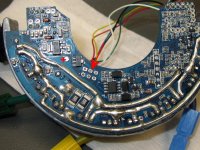tomjasz
1 GW
The recent BBSHD has two addition connectors from the controller. One Higo, Gear Sensor and one JST. WHY the JST????
That's the report I got. I'll get a picture to confirm. He fellow may have mistaken another connector for a JST. However there IS a second connector besides the GS and usual. Did they comet with a light connection? I guess I'd better ask for multimeter readings as well.fechter said:So water can get in? I haven't seen one like that.
Being a apostate, an answer isn't possible.Alan B said:There is a 3 wire JST connector on the Luna dual speed hubmotor controller as well. I don't know what it is intended for. The other connectors on this controller are Higo. Luna should be able to answer that question, I haven't asked them.
Yes, with some displays there is a light option. Not sure which but definitely with the first color and the recent horizontal. I don't remember if the 965 has a light option. I think the DCP- 10 and DCP 14 do. They're in my spare box, I'll hook all up tomorrow to check and confirm. Unless someone else chimes in.fechter said:So it's a headlight connector?
I'd sure expect it would. I'd definitely treat it with Boeshield and give it a tight shrink tube.fechter said:So water can get in? I haven't seen one like that.
Couldn't short out?Alan B said:If it is a 6V supply for a light, a little current leakage from water would not matter much, it is not an input signal that would be corrupted.
A bit of silicone would make it repel water.
![ATTACH]](/sphere/proxy.php?image=http%3A%2F%2F%5BATTACH+type%3D%22full%22+alt%3D%22dpc-18.jpg%22%5D229345._xfImport%5B%2FATTACH%5D&hash=aa2b2ba32789bf7cd6597fb29c7e3429)
![ATTACH]](/sphere/proxy.php?image=http%3A%2F%2F%5BATTACH+type%3D%22full%22+alt%3D%22dpc-18.jpg%22%5D1%5B%2FATTACH%5D&hash=451fa2093fd41c9838bb100285a736db)
tmort said:Even if these connectors are not where the headlight connects or are not present, does anyone know where on the board itself a headlight wire would connect (assuming they all use the same board).


